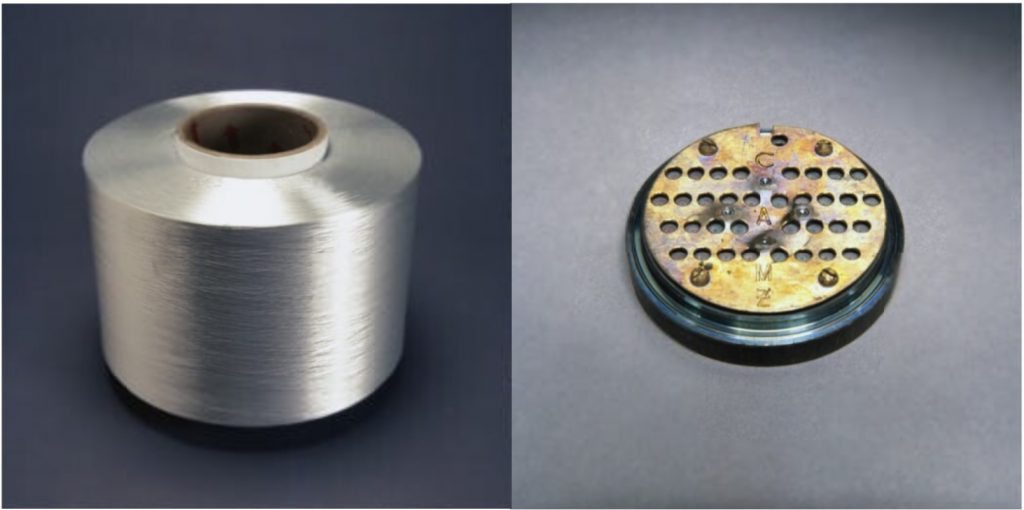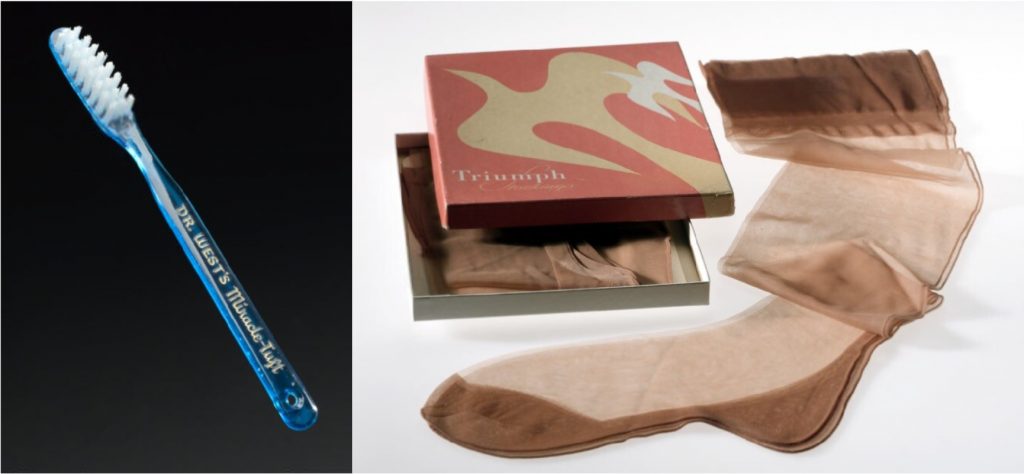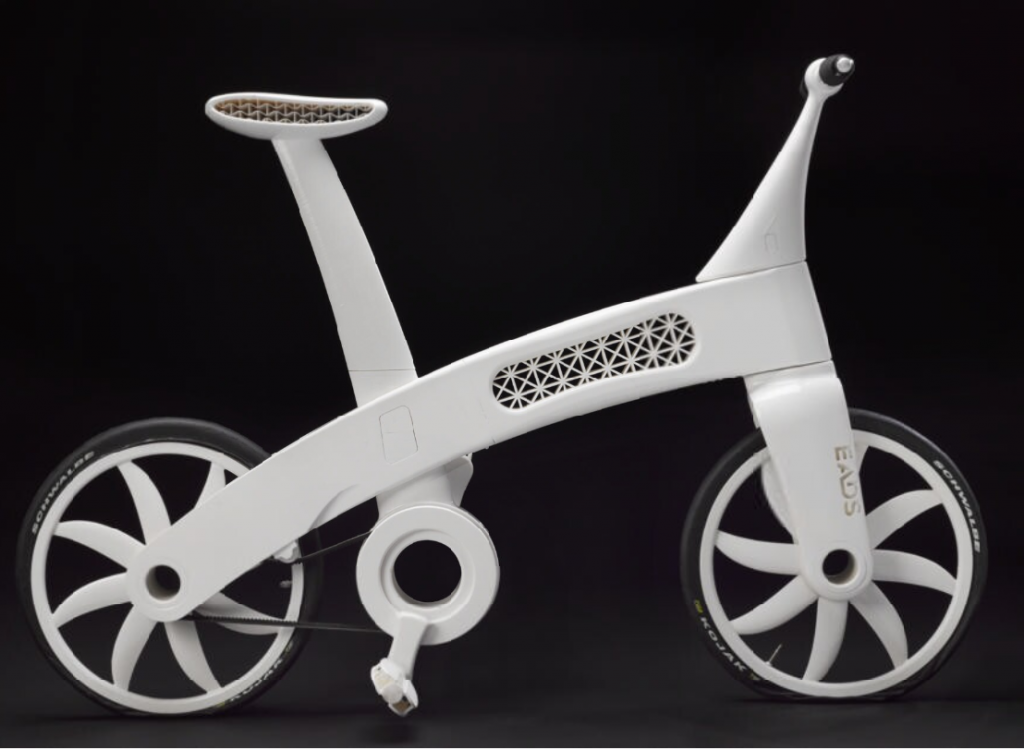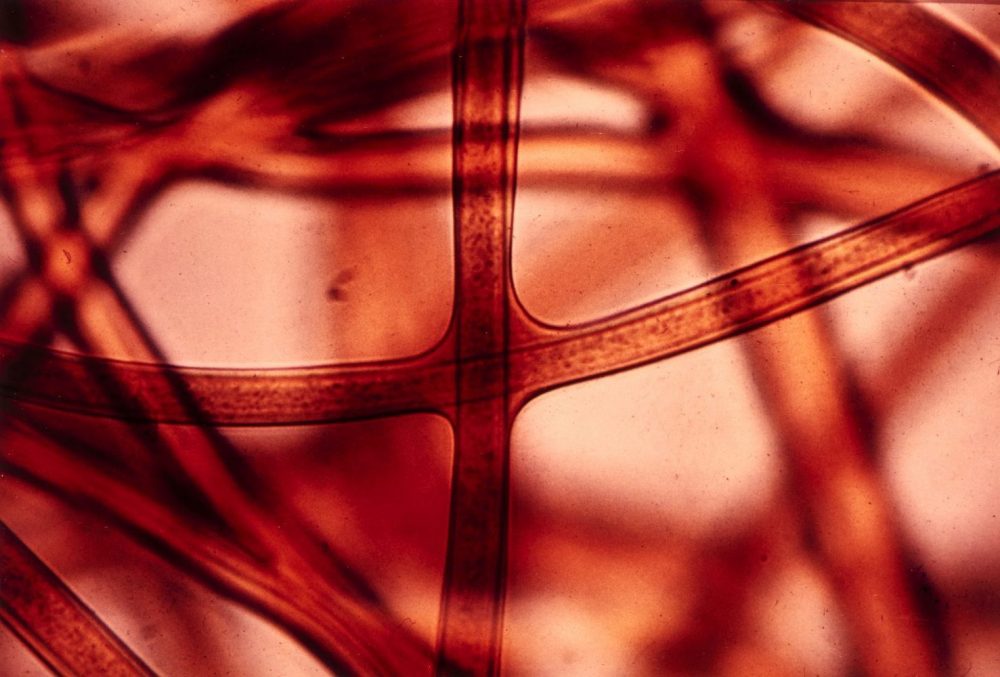The father of nylon was a Harvard-educated, world-renowned organic chemist Wallace Carothers born in 1896. Carothers was hired away from academic research by DuPont in 1927. DuPont is an American conglomerate founded in 1802 as a gunpowder mill, which has expanded over the last two centuries to become one of the largest chemical companies in the world, and they owe a large part of their success to the research work of Wallace Carothers.

After leaving Harvard, Carothers established himself in the DuPont Experimental Station and quickly started to research the possibility of producing synthetic materials by melting different organic compounds together. After several years of experimental work, on 28 February 1935, Carothers produced an example of the first wholly synthetic fabric, nylon.

Nylon formed by combining two Carbon based substances, which create a solid at the boundary where they meet, that can be stretched and made into a thread. When nylon is heated and pushed through tiny holes under pressure, it forms thin fibres which are quickly pulled away so that they cool and stretch. Nylon was found to give filaments with far greater strength and resistance to heat and water than any previous man-made fibre.

DuPont were keen to find as many commercial uses for the new wonder material as possible. The company initially tested nylon in toothbrushes, but eventually focused on the women’s hosiery market. The popularity of silk stockings in the 1930s had not decreased their cost, and when ‘nylons’ were launched as a cheaper and snag-resistant alternative, they flew off the shelves, even causing riots with women fighting each other to get a pair.
On February 24, 1938, the Weco Products Company of Chicago, Illinois, began selling its new “Dr. West’s Miracle-Tuft”, the earliest toothbrush to use synthetic DuPont nylon bristles.

At the outbreak of war DuPont looked to exploit nylon for the war effort. By 1945 DuPont was producing around 25 million pounds of nylon annually, mostly for use in rope, nets and as a cheaper alternative to silk for parachutes. With DuPont’s production diverted away from stockings, women took to painting their legs to mimic ‘nylons’ and they were used as currency on the black-markets of Europe and America throughout the war.

Wallace Carothers had almost 50 patents to his name by 1937 and had generated huge profits for DuPont. Carothers had suffered from depression throughout his life and had often doubted his abilities as a chemist. Two years after he successfully synthesised nylon, but before it was first commercially available, Carothers was overcome by his illness, taking his own life by swallowing a cocktail of lemon juice and potassium cyanide on 28 April 1937. This tragic event was widely reported in the United States, but Carothers has faded from history even as the uses and application of nylon continue to develop.
